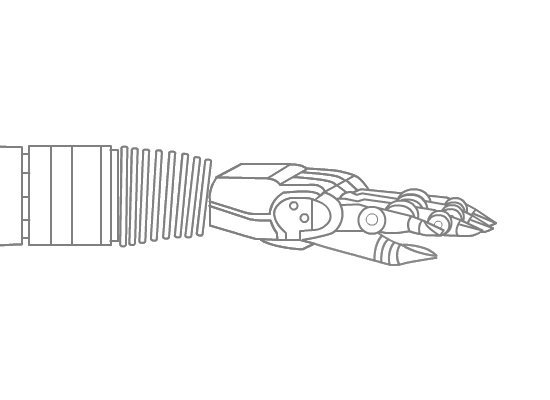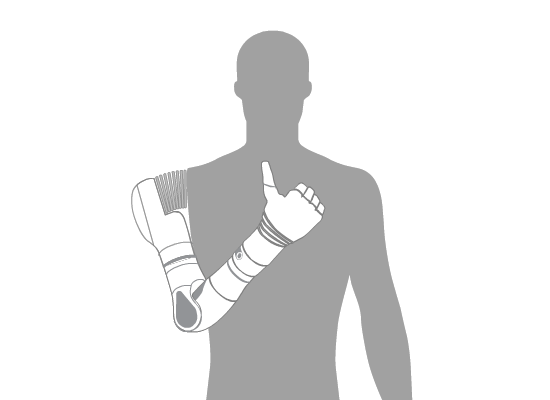- The LuKe arm is the only commercially-available prosthesis with a powered shoulder, allowing a shoulder-level amputee to reach over their head.
- The prosthetic arm enables users to perform a wide range of activities that were previously challenging or impossible, from daily chores to recreational pursuits.
OUR TAKE
As technology progresses, so too will the capabilities of the Luke Arm. Future iterations may incorporate even more advanced AI features, sensory feedback systems, and connectivity with smart devices. This promise of ongoing improvement ensures that users are not just investing in a prosthetic but are also stepping into the future of assistive technology.
-Lia Xu, BTW reporter
Developed by DEKA Research & Development, this cutting-edge prosthetic arm represents a monumental leap forward in the integration of robotics, artificial intelligence, and user-centric design. Named after the iconic “Star Wars” character Luke Skywalker, the Luke Arm is more than a high-tech device; it is a symbol of how technology can dramatically enhance human capabilities and improve lives.
The genesis of the Luke Arm
The journey of the Luke Arm began in the early 2000s, driven by the vision of Dean Kamen, the inventor known for his revolutionary Segway and contributions to medical technology. Kamen’s goal was to create a prosthetic arm that could replicate the versatility and dexterity of a human limb while addressing the limitations of existing prosthetic solutions. With a background in engineering and a passion for improving quality of life through technology, Kamen assembled a team of experts to develop a prosthetic arm that could offer unparalleled control, comfort, and functionality.
The Luke Arm is the culmination of a decade of development, a device that combines advanced robotics with sophisticated artificial intelligence algorithms. Unveiled to the public in 2014, the Luke Arm, named after the iconic Star Wars character Luke Skywalker, is designed to give users unprecedented control and functionality. The result is a prosthetic that not only looks and feels like a natural extension of the body, but also offers a level of functionality that was previously unattainable.
Also read: 5 insights from Jordan Marotta on bionic arms and robotic thumbs

Unmatched dexterity and control
We changed the way we are sending that information to the brain so that it matches the human body. And by matching the human body, we were able to see improved benefits.
Gregory Clark, associate professor of the University of Utah biomedical engineering
One of the most remarkable features of the Luke Arm is its ability to replicate the fine motor skills of a natural hand. Equipped with advanced sensors and motors, it allows users to perform intricate tasks, such as buttoning a shirt, writing, or even playing a musical instrument. This level of dexterity significantly expands the range of activities that users can engage in, contributing to a more independent lifestyle. Besides, The arm’s design includes the ability to adjust grip strength automatically, enabling users to handle a variety of objects safely and effectively. Whether it’s a fragile glass or a heavy toolbox, the Luke Arm can adapt its grip to provide the necessary support without risking damage to the object or the user. “We changed the way we are sending that information to the brain so that it matches the human body. And by matching the human body, we were able to see improved benefits,” Gregory Clark, associate professor of the University of Utah biomedical engineering, says.

Enhanced sensory feedback
As the technology evolved, researchers began focusing on integrating sensory feedback into prosthetics. The sensory feedback system operates through a combination of sensors embedded in the prosthetic and advanced algorithms that interpret the data. These sensors relay information to the user’s nervous system, often through electrodes placed on the skin or implanted in the body. This direct connection allows for a more seamless integration between the prosthetic and the user’s own sensory perception, resulting in a more intuitive experience.
For many users, the ability to feel through their prosthetic arm represents a profound transformation in their daily lives. Enhanced sensory feedback not only improves functionality but also boosts confidence and independence. Users can navigate complex tasks—like pouring a cup of coffee or shaking hands—without the fear of dropping or mishandling objects, leading to a more enriching and fulfilling life.
Also read: EU seeks feedback on Google’s fair competition proposals
Cutting-edge artificial intelligence
Just providing sensation is a big deal, but the way you send that information is also critically important, and if you make it more biologically realistic, the brain will understand it better and the performance of this sensation will also be better.
Gregory Clark, associate professor of the University of Utah biomedical engineering
At the heart of the Luke Arm’s functionality is its AI-powered control system. The arm learns from the user’s movements and preferences, adapting its responses over time. This means that the more a user interacts with the arm, the better it becomes at anticipating their needs, ultimately leading to a more seamless and intuitive experience. With machine learning capabilities, the Luke Arm can customise its settings based on individual habits. For instance, if a user frequently adjusts their grip for specific tasks, the AI can recognise this pattern and make automatic adjustments, making daily activities easier and more efficient. “Just providing sensation is a big deal, but the way you send that information is also critically important, and if you make it more biologically realistic, the brain will understand it better and the performance of this sensation will also be better,” says Clark.

Ergonomic and comfortable design
The Luke Arm is designed with ergonomics in mind, ensuring a comfortable fit for long periods of wear. Lightweight materials reduce fatigue, while the arm’s natural range of motion allows for fluid movement, closely mimicking that of a biological limb. This thoughtful design helps users feel more at ease as they go about their daily routines. Unlike traditional prosthetics, which can sometimes cause discomfort or irritation, the Luke Arm prioritises user comfort. Its design considers various factors such as weight distribution and fit, allowing users to wear it for extended periods without the strain commonly associated with prosthetics.
Pop quiz
What does the sensory feedback system in the LUKE Arm allow users to do?
A. Control the arm remotely
B. Feel sensations through the prosthetic
C. Change arm colours
D. Measure temperature
The answer is at the bottom of this article.
Enhanced quality of life and aesthetic appeal
One of the most significant advantages of the Luke Arm is its ability to restore independence to individuals who have lost limbs. The functionality and adaptability of the arm empower users to perform daily tasks that may have been challenging or impossible, leading to a renewed sense of self-sufficiency. The psychological impact of regaining control over one’s life is profound. Users report feeling more confident and capable, which contributes positively to their emotional health. The Luke Arm helps individuals reconnect with their sense of identity and purpose.
The visual appeal of the Luke Arm cannot be overstated. Its contemporary design is not only functional but also attractive, helping to reduce stigma and promote acceptance among users. Many individuals feel more confident using a prosthetic that aligns with modern aesthetics, allowing them to express their identity without feeling self-conscious. The Luke Arm’s stylish design allows users to integrate the device seamlessly into their everyday lives, whether at work, home, or in social settings. This integration fosters a sense of normalcy and helps users engage more fully in various environments.

Modularity and customisation
The Luke Arm features a modular design, which allows users to easily swap out components and attachments based on their specific needs. This adaptability means that users can tailor their prosthetics to suit different activities, whether they’re cooking, exercising, or engaging in hobbies. Should any part of the arm require repair or replacement, the modularity simplifies the process. Users can replace individual components rather than needing a completely new device, which is not only more cost-effective but also minimises downtime.
Towards a future of unparalleled accessibility and capability
As prosthetic technology continues to advance, the Luke Arm stands as a beacon of what’s possible when innovation meets human needs. Future developments may see even more sophisticated integration of AI and robotics, further improving functionality and user experience. Researchers and engineers are already exploring ways to enhance sensory feedback, allowing users to “feel” their prosthetic in ways that were once thought impossible. The Luke Arm marks the beginning of a new era in prosthetics, where AI-driven technology meets human-centric design. It not only represents a significant leap in prosthetic capabilities but also underscores the potential of technology to profoundly impact lives, offering hope and improved quality of life to individuals around the world.
The future of prosthetic technology shines brightly with possibilities. Advances in sensory feedback, direct neural control, and machine learning are paving the way for prosthetics that are more intuitive, capable, and accessible than ever before. These innovations promise not only to enhance functionality but also to make prosthetic care more affordable and widespread, ensuring that everyone who needs these incredible technologies can benefit.
In essence, the landscape of AI in prosthetics is ripe for transformative breakthroughs. As they push the boundaries of innovation, they are not just enhancing devices; they are redefining the way humans interact with technology. These advancements are set to improve lives and fundamentally alter our understanding of ability and enhancement.
The correct answer to the pop quiz is B. Feel sensations through the prosthetic
